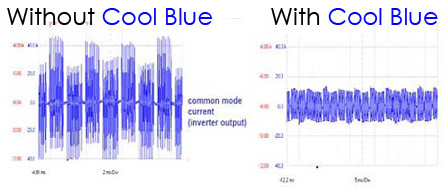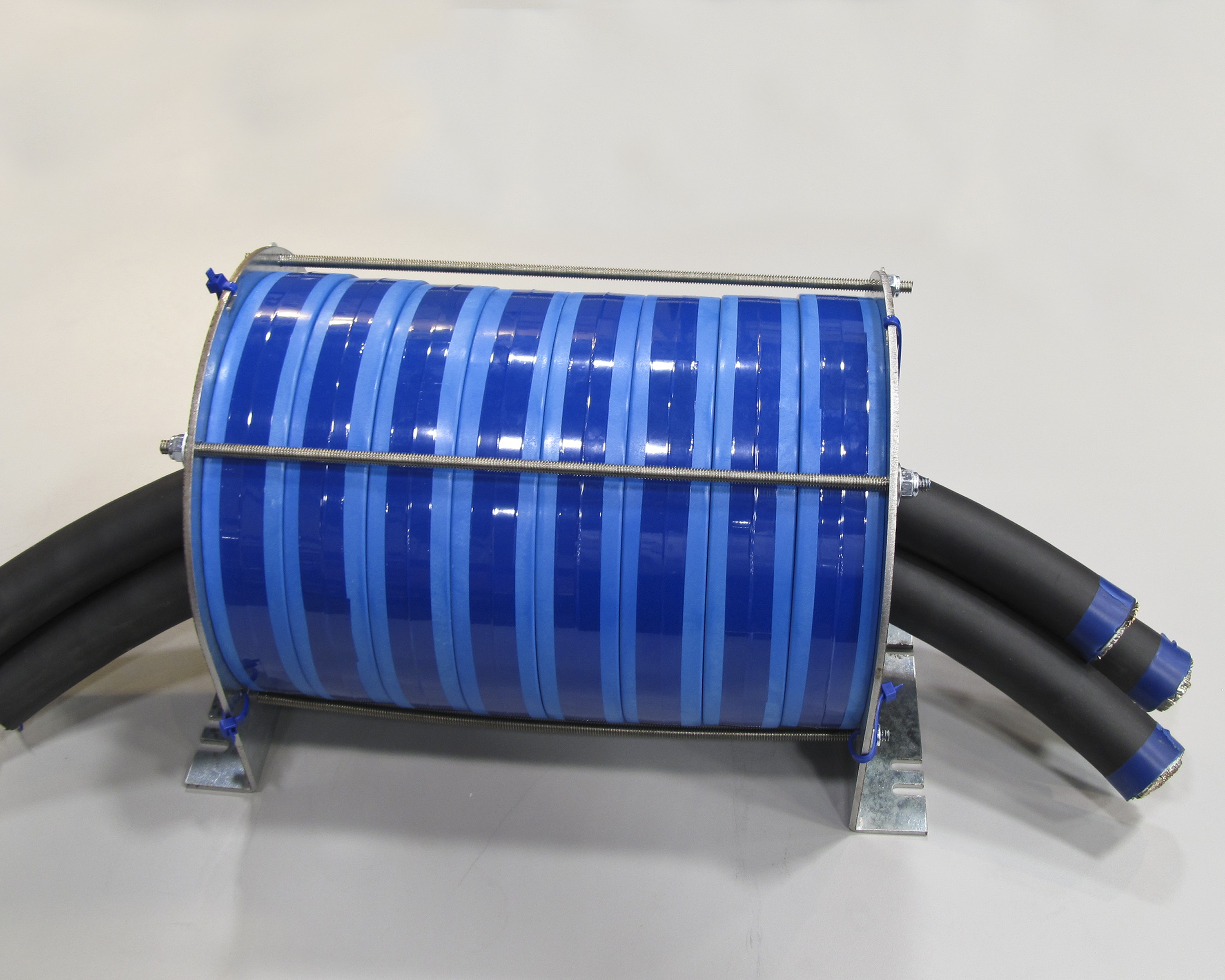High Bearing Currents Degrade Motor/Generator Performance and Decrease MTBF
The Problem:
High bearing currents are damaging the motor bearing and raceway. The damage then degrades bearing performance and ultimately shortens the life of the motor. The raceway is damaged through destructive electric discharge machining (EDM) causing microscopic pitting of the raceway. Continued exposure to the high bearing currents and shaft voltages softens the raceway metal creating fluting when the ball bearings roll over the pits.
- Rotor charge accumulation from the mechanical systems such as belt driven couplings, ionized air passing over the rotor fan blades or high velocity air passing over the rotor blades in the turbine.
- External rotor sources such as the static exciter in a turbine generator.
- Electrostatic coupled shaft voltage from the PWM Inverter.
- The voltage exceeds the dielectric breakdown of the oil.
- An asperity point breaks through the oil film forcing contact between the bearing and the raceway.
The Solution:
The solution is to reduce or eliminate the electrostatic coupled voltage in the motor/generator/inverter system caused by the inverter or turbine drive. The implementation calls for the minimization of the electrostatic voltage by placing a common mode choke on the drive lines of the inverter or turbine generator.



